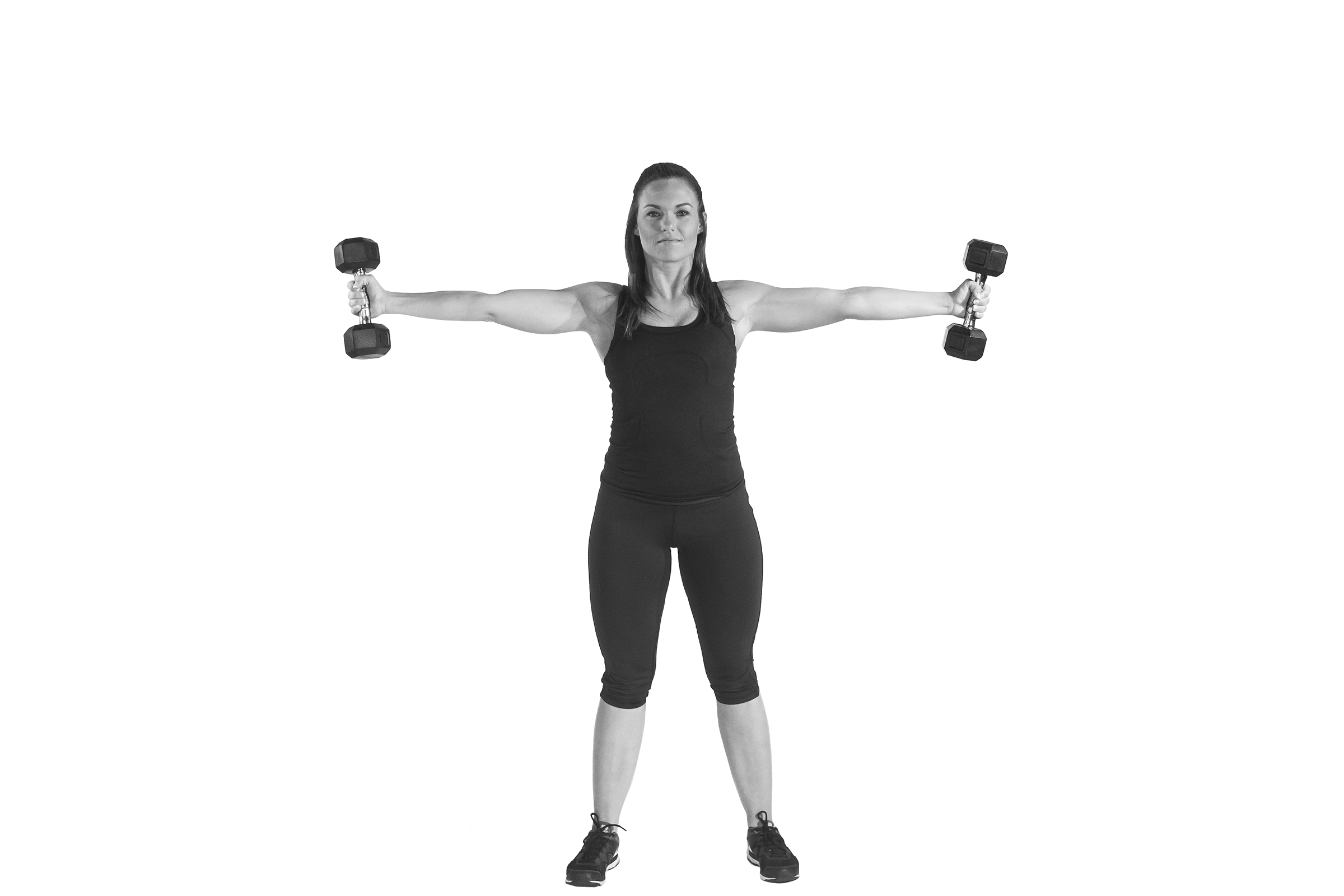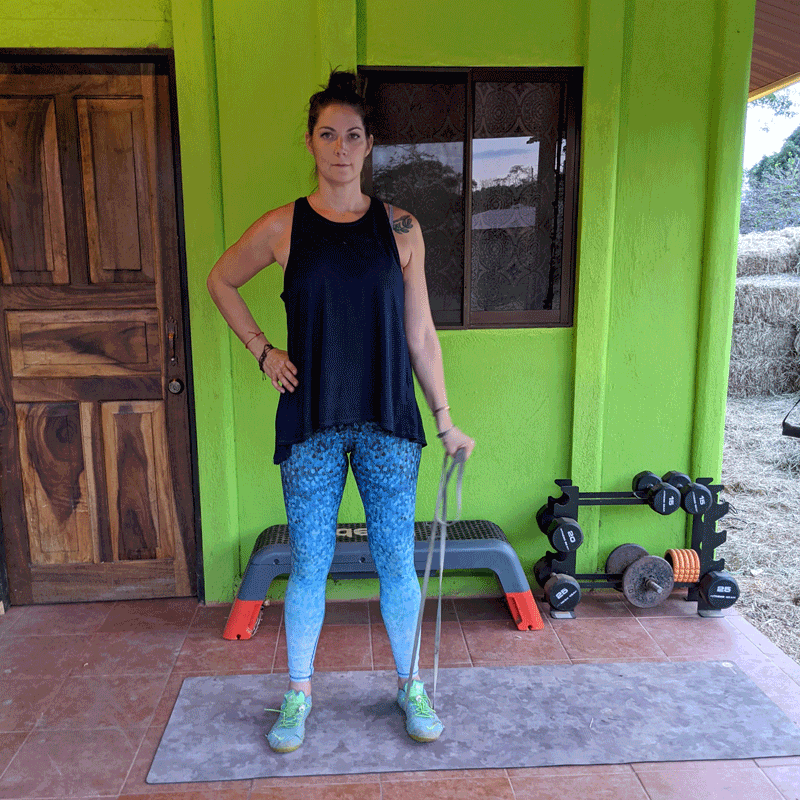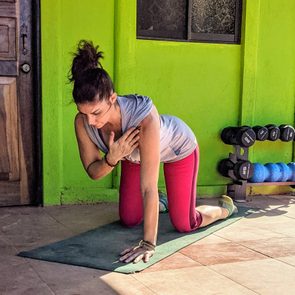5 Chest Exercises You Can Do at Home
Updated: May 20, 2021
Strengthen your chest (and improve your posture) with these at-home exercises that target your chest, shoulders, and even your core.
Strengthening your chest
Chances are, you’re no stranger to chest and upper body exercises. They’re a strength-training favorite, not only helping you look good but also building muscles that affects all sorts of daily movements.
The chest is comprised of four main muscles: the pectoralis major, pectoralis minor, serratus anterior, and subclavius. You’ve probably heard them casually called the “pecs.” They’re responsible for pushing movements, pulling the arms toward the center of the body, bending and internal rotation of the arm, and stabilization of the shoulder blades. You’d have a hard time getting through your daily tasks, or even maintaining good posture, if you failed to maintain proper strength in your chest.
The pecs are team players. These muscles work in close conjunction with the deltoids (the rounded muscles of the shoulder), rotator cuff (surrounding the shoulder joint), and the muscles of the back to allow for a wide range of upper body movements and the mobility of the shoulder joint as a whole.
Chest exercises to do at home
You don’t have to hit the gym to enjoy a high-quality chest workout. In fact, you can strengthen all of the major chest muscles (and the motions they perform) from the comfort of your home, with nothing more than dumbbells, a resistance band, and a suspension trainer. Consider incorporating two to three of the following exercises into your next home-based upper body workout.
Push-ups
The push-up is one of the best and easiest home-based chest exercises because it requires zero equipment and can be easily modified for every level of fitness. For instance, if you can’t do a full push-up—one where you’re on the floor, balance on your hands and the balls of your feet on the floor—you can do a push-up balanced on your hands and knees. Or you can do an incline push-up ,with your hands on an elevated surface, like a sturdy bench or even the wall.
In addition to working the major muscles of your chest, this move targets your shoulders and triceps (along the back of your upper arms) and even works your core because you have to maintain a plank position as you do the exercise.
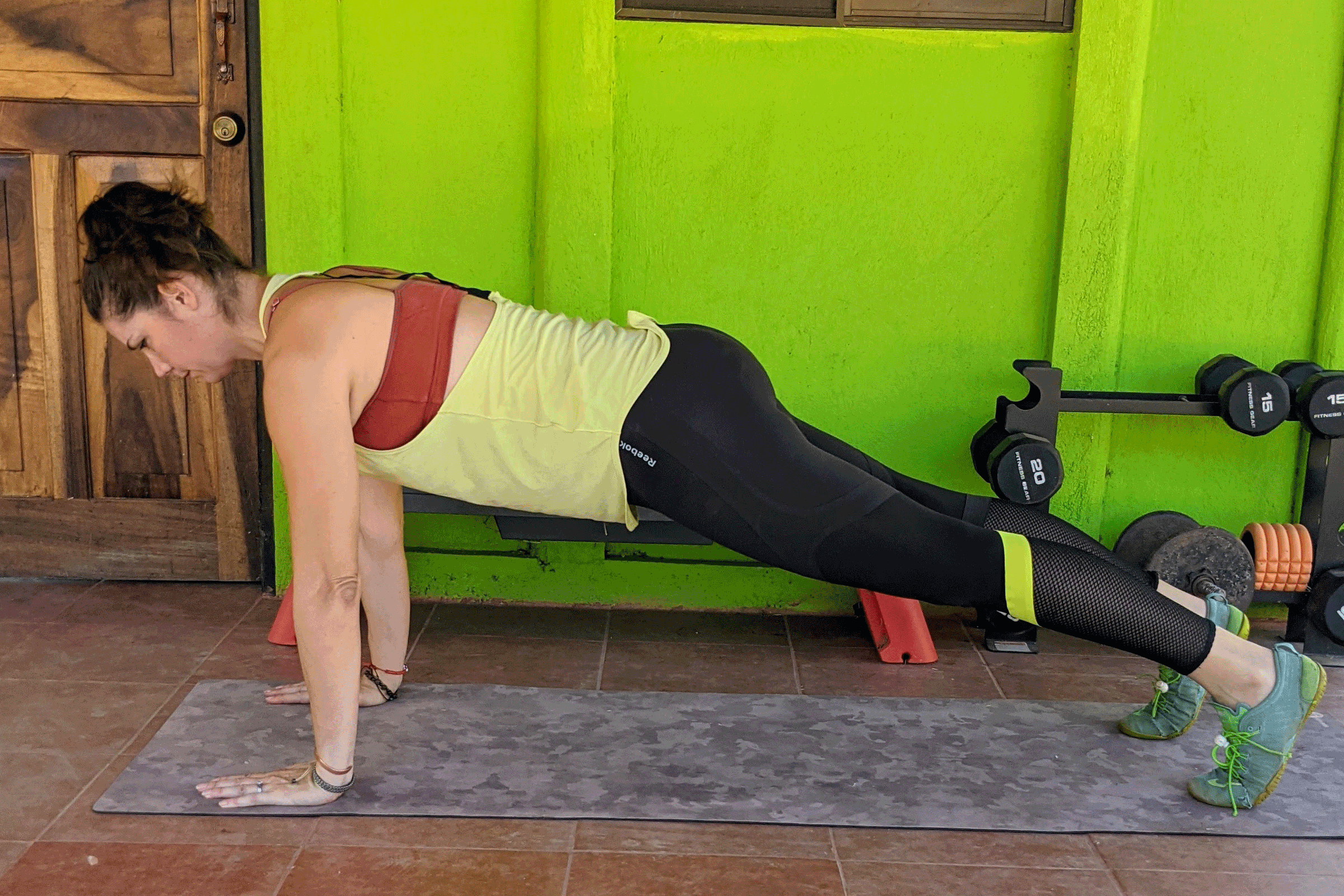
How to do it
Start in a high plank position on a mat: hands directly under your shoulders, arms and legs fully extended, and weight supported by your palms and the balls of your feet. Your body should form a straight line from heels to head. Engage your core to keep your torso steady and tight.
Inhale and begin bending your elbows so they move back and out at roughly 45 degrees from your body, lowering your chest toward the floor. When your chest is a few inches from the mat, exhale and reverse the movement, pushing your body away from the floor and back to the starting position.
Perform a total of two to three sets of 12 to 15 repetitions, focusing on proper form. If you can’t complete a full set with proper form, modify the exercise as you go. For instance, if you can only perform eight standard push-ups, lower your knees to the ground to finish your set using modified push-ups.
(Here’s how many push-ups to do to see results.)
Push-ups with resistance band
Once you’ve mastered the standard push-up, you can pump up the challenge by adding a resistance band to develop more strength. You can even use a resistance band while doing modified versions of a push-up (like a knee push-up). This will help you develop more strength and level up to the more-challenging standard push-up.
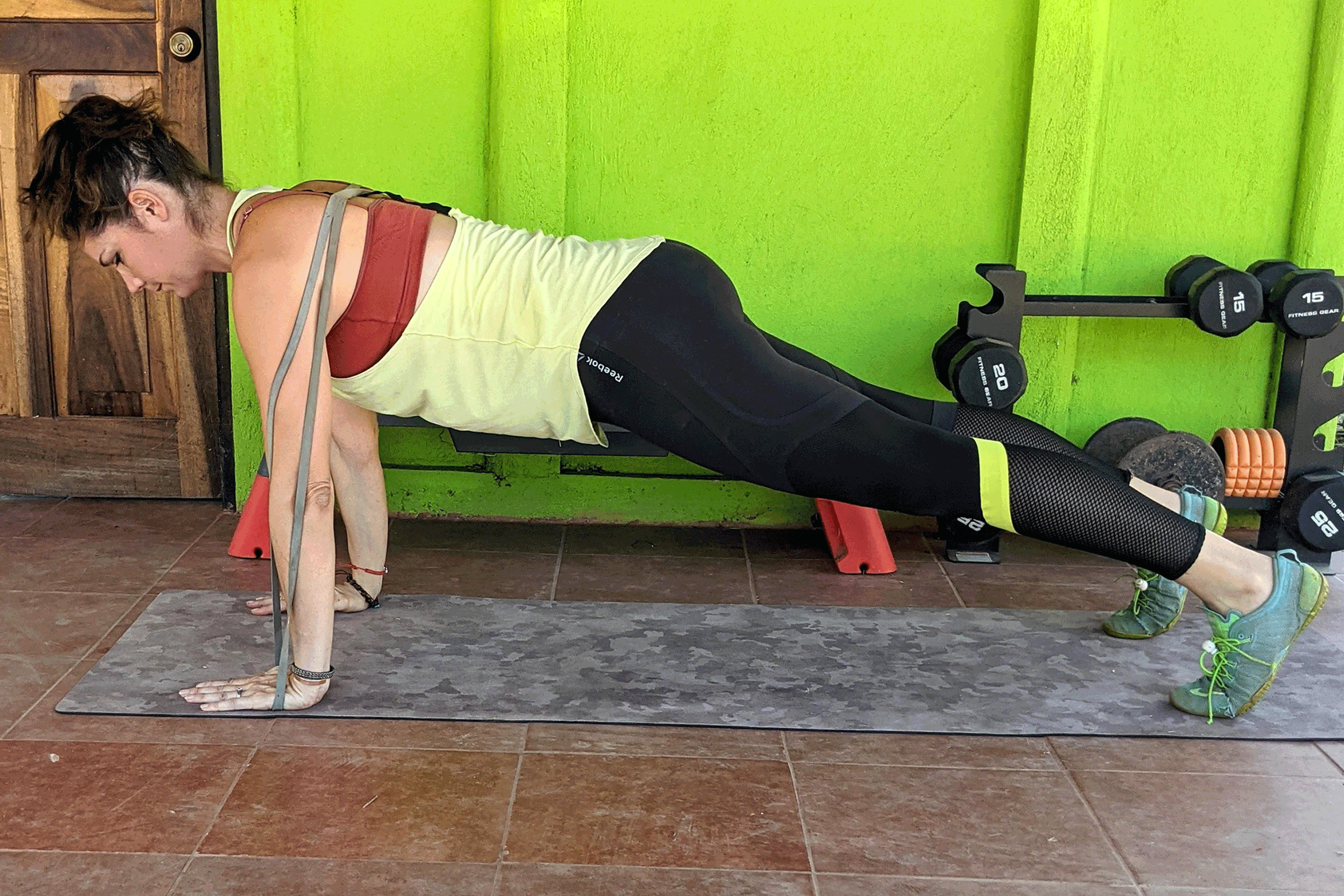
How to do it
Think of this like a traditional push-up with the addition of a resistance band. The move itself isn’t different, but the setup with the band is.
Before getting into high plank position, wrap the resistance band around your back. Hold the ends in each hand. Position the band where it’ll feel comfortable and won’t interfere with your movement, generally across your shoulder blades and along the outsides of your upper arms, avoiding your elbows.
Set up on your mat in the high plank position, making adjustments to the band as needed. You want the band to be tightest at the highest position of the push-up, still offering resistance when you’re at the lowest point of the push-up. So, when you’re in your high plank position, the band should be pulled tight, but shouldn’t interfere with your ability to hold your plank correctly.
Once you’re set up, perform a push-up: Bend your elbows and lower your chest toward the floor, inhaling as you move through the downward part of the exercise. When your chest is almost to the floor, reverse the movement and extend your elbows, pressing your chest away from the floor as you exhale, pushing against the resistance of the band.
Perform eight to 12 repetitions. The last two reps should be difficult but not impossible to perform with perfect form. Complete a total of two to three sets.
(Try these upper body exercises with resistance bands.)
Suspension push-up
The suspension push-up, another variation on the standard push-up, is perfect for home-based workouts. The difference with this exercise, though, is that it requires a greater engagement of the core and your stabilizing muscles, particularly at the shoulder joint. Because chest strength plays an important role in the protection and movement of the shoulder, addressing weaknesses you may have developed is important for overall upper body mobility and injury prevention.
The catch: If you have weaknesses in your stabilizing muscles, this exercise will be significantly more challenging than a standard push-up.
You’ll need a suspension trainer for this move. This home-gym equipment uses nylon straps, which are tied to exercise bars, doors, even tree limbs, for strength-training moves.
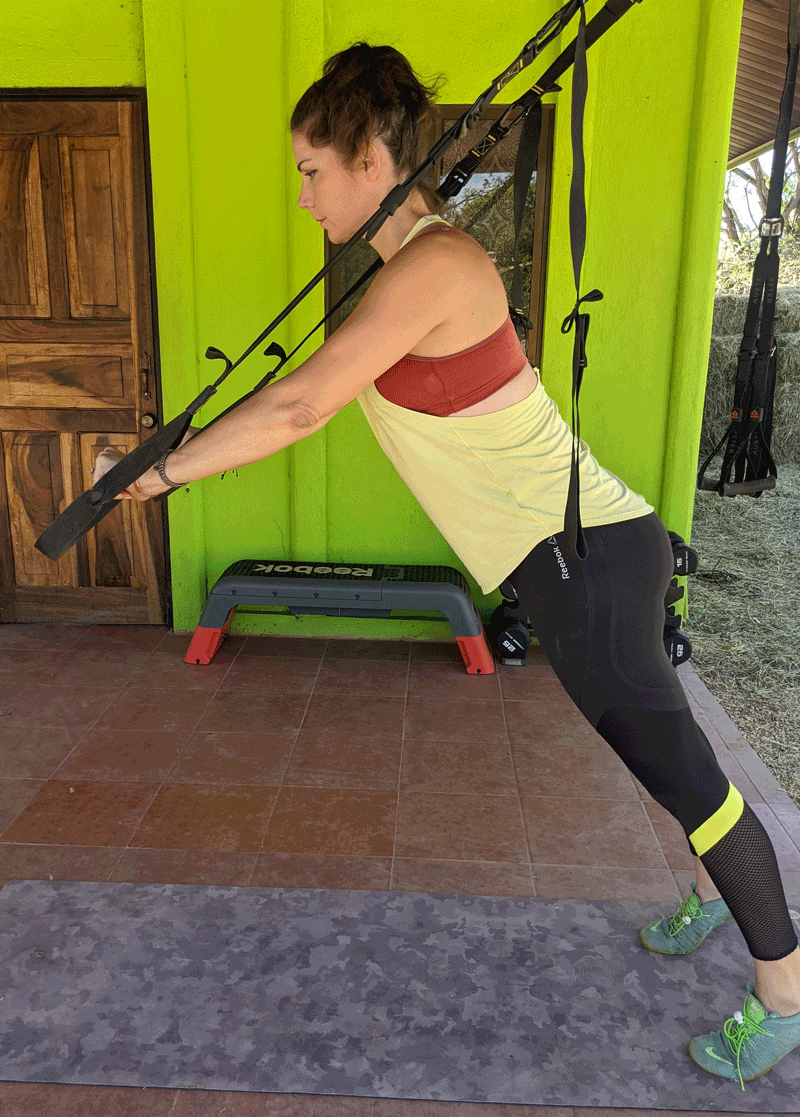
How to do it
Start with your body in a semi-upright position, forming a 60- to 85-degree angle with the floor. The more parallel your body is to the floor, the more of your own body weight you’ll be using as resistance. This can be taxing when your small shoulder stabilizers are playing a significant role in supporting the exercise.
Grasp the handles of a suspension trainer with both hands. Extend your arms in front of you so the suspension trainer bands and your arms are fully extended. Think of this starting position as a modified high plank pose: Your hands are aligned with your shoulders, and your body angle is supported by the balls of your feet and your hands.
You should feel your shoulders, chest, and core engaged to maintain this angled position. It’s natural to feel a little shaky or wobbly, but you don’t want to feel out of control. If you’re afraid you won’t be able to hold this position, change your angle so your body is more upright.
The goal is to keep your hand position steady, your body stable, and your palms and the suspension trainer straps aligned with your shoulders as you perform the exercise.
Engage your core and inhale. Bend your elbows, moving them back at roughly 45-degree angles from your torso, lowering your chest toward your hands. When your chest is a few inches from the handles, exhale and reverse the movement as you press back, extending your elbows and returning to the starting position.
Complete eight to 12 repetitions, adjusting your body angle as needed to maintain proper form. Do two sets.
Dumbbell chest press
According to research sponsored by the American Council on Exercise, the barbell bench press is the most effective exercise for building strength in the major muscle groups of the chest, especially the largest muscle, the pectoralis major. That said, not everyone has a standard barbell bench press at home, which makes a dumbbell version of the exercise an excellent alternative.
One other advantage of the dumbbell chest press is that you have to independently lift the weight with each arm. That is, your arms aren’t working together to lift a single bar; rather, each arm is lifting its own dumbbell. Why is that a good thing? If you have side-to-side differences in muscle strength or shoulder stability, you can work to fix the imbalances over time.
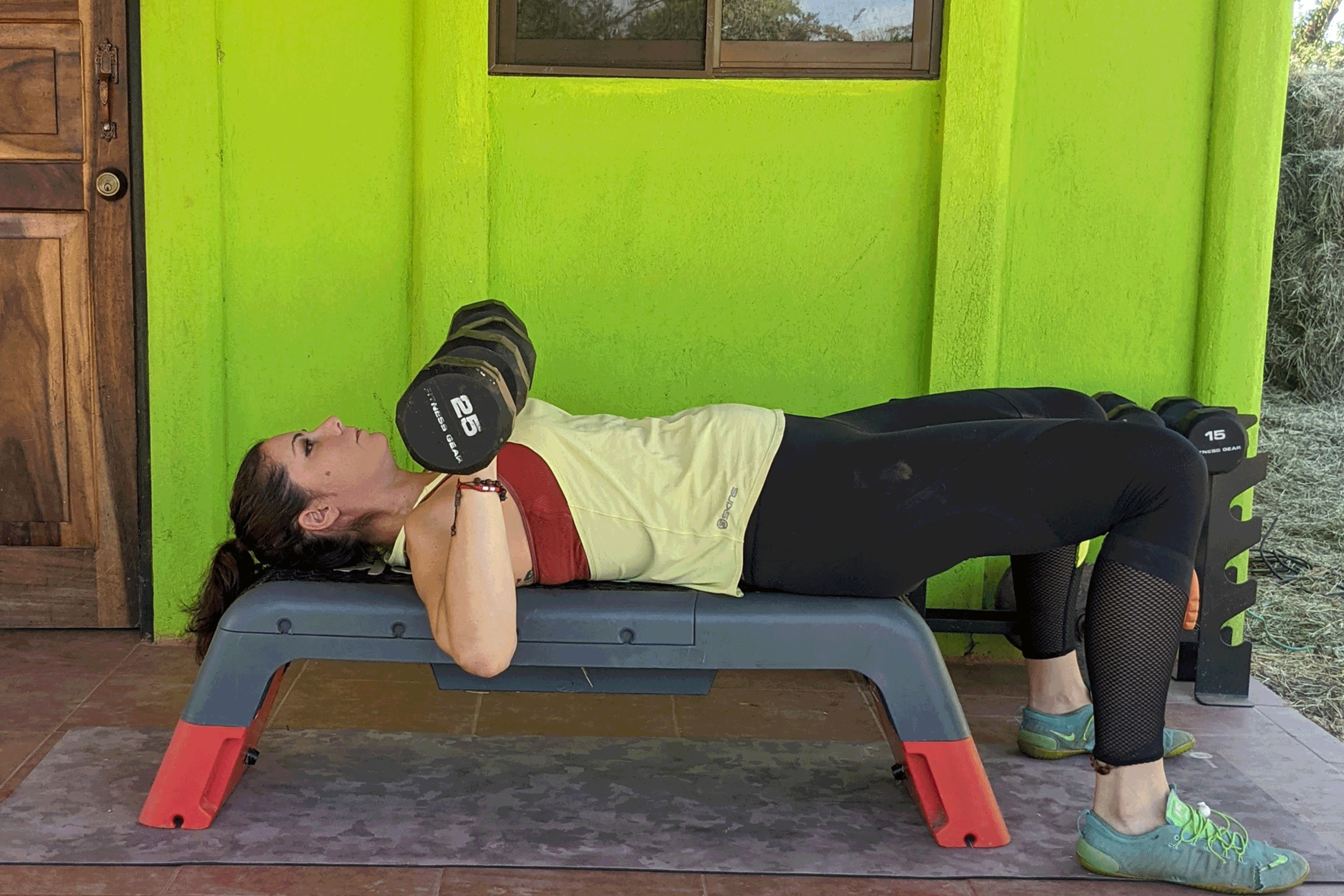
How to do it
Lie on a sturdy bench. Hold a dumbbell in each hand at chest level, just beyond your shoulder line. Keep your palms facing away from your head.
Engage your core and make sure your low back is touching the bench. It’s a common mistake to arch the low back as you lift the weight, but this added momentum takes focus away from the pecs. The low back, feet, hips, and head should all remain steady and stable throughout the exercise. It’s better to lift less weight with better form than to lift more weight with poor form.
From the starting position, take a deep breath in. On the exhale, press both dumbbells straight up, extending your elbows fully. Your arms will create an 11 directly over your chest. Hold for a beat. As you inhale, slowly and steadily lower the dumbbells back to the starting position.
Perform eight to 12 repetitions with enough weight so that the last one or two reps of each set are challenging, but not impossible, to perform with good form.
Complete two to three sets.
(Develop even more core strength with these best core exercises.)
Dumbbell fly
The dumbbell fly targets the same major muscles of the chest as the push-up and chest press, but the motion is different. Both the chest press and the push-up work on muscle strength for a pushing action. The dumbbell fly, on the other hand, builds strength through pulling your arms from a position that’s extended away from your body’s midline, back to the center.
This action is common in sports and everyday life. You use it when pulling a door shut behind you or swinging a bat or club. Yet it’s often neglected when it comes to strength training.
If you don’t regularly perform this type of exercise, choose lighter dumbbells than you’d use for other chest exercises. This will help you avoid injury.
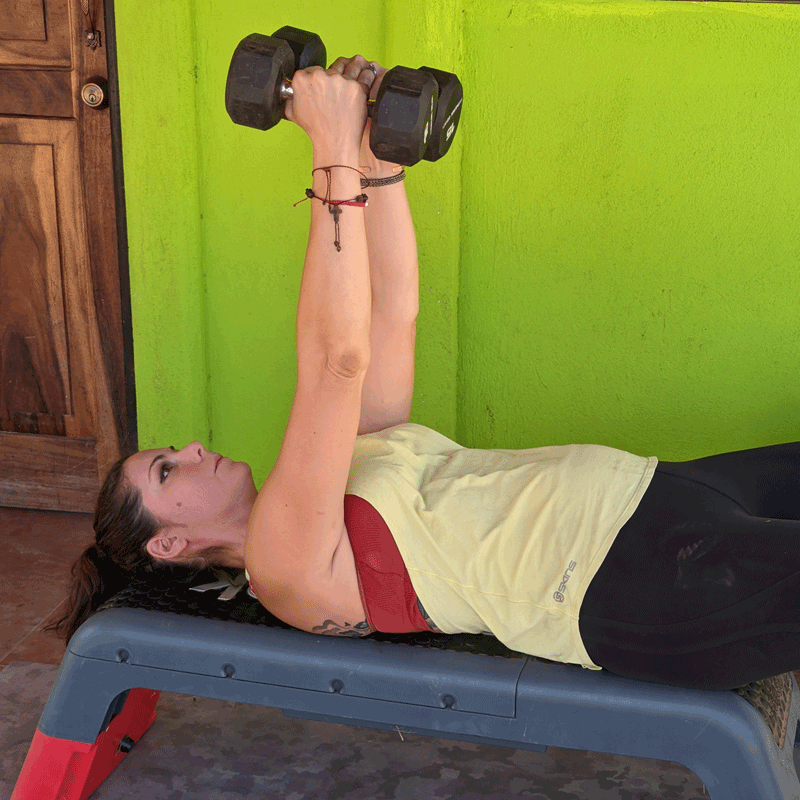
How to do it
Lie on your back on a bench. Hold a dumbbell in each hand, with your arms extended directly over your chest and palms facing inward, toward each other. Engage your core to keep your torso steady. Bend your elbows slightly, as if creating small parenthesis with your arms over your chest.
From this position, inhale and steadily open your arms outward, creating a T with your arms and your torso. When your arms are extended out to the sides, exhale and reverse the movement, engaging your chest to pull your arms back to the starting position.
Perform eight to 12 repetitions. Complete a total of two sets.
Next, here are the quick workout moves you can try in 60 seconds.


















